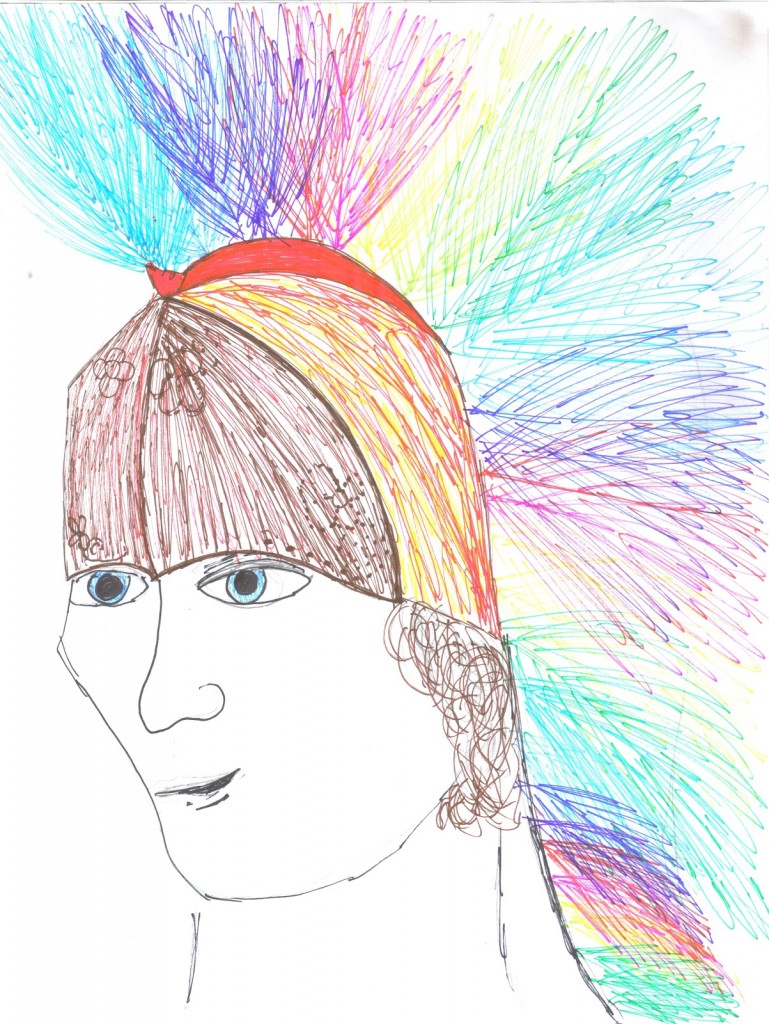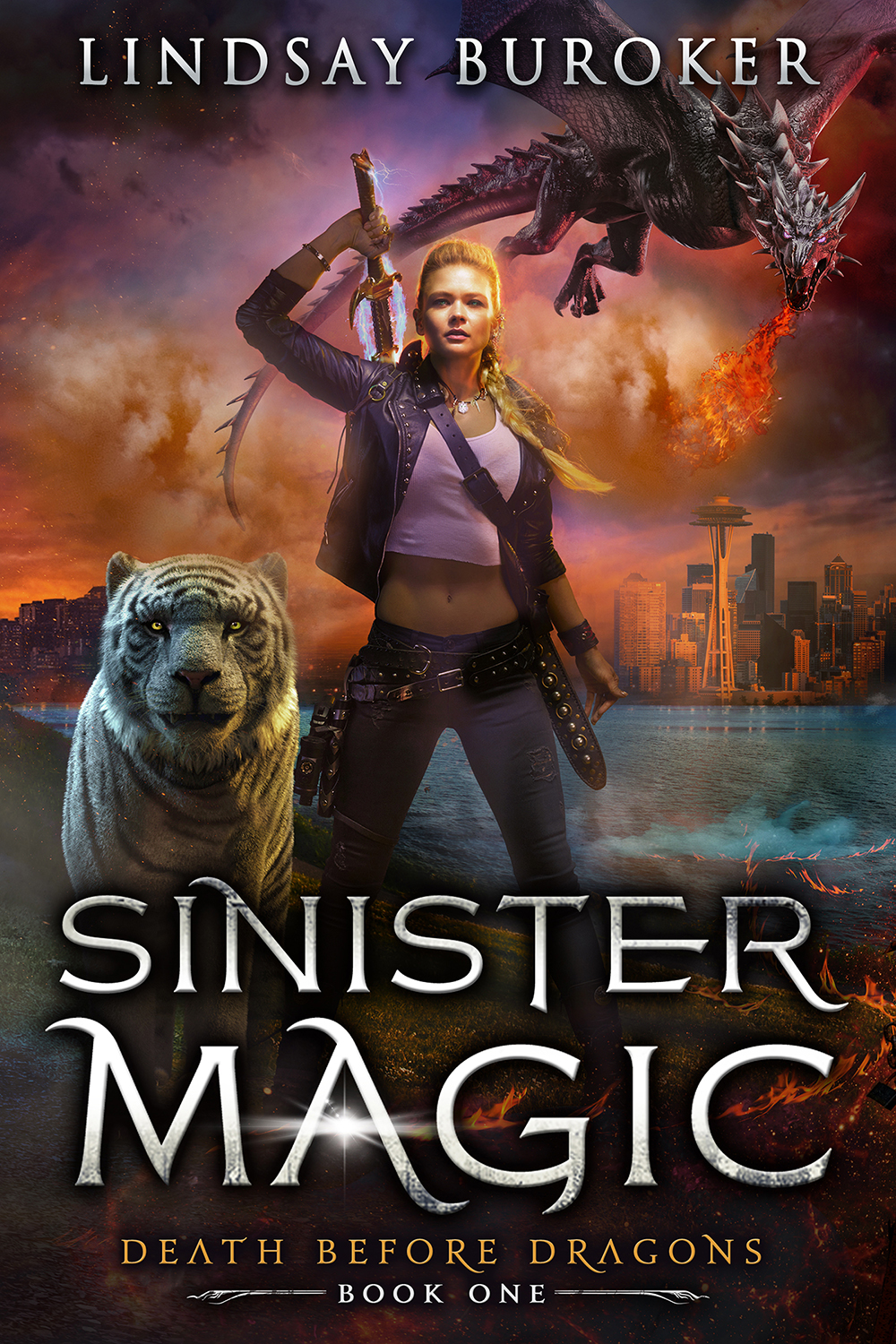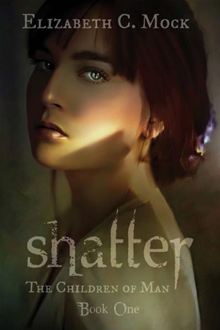 Some independent authors have little desire to hunt down an agent or a traditional publishing contract once they’re doing well. Others choose to use their self-publishing success as a springboard into the big time. Fellow indie fantasy author, Elizabeth Mock, has recently signed on with an agent and is here to answer my questions on why she’s choosing to seek a traditional contract. If you’re an author thinking of doing the same, you may want to check out her answers.
Some independent authors have little desire to hunt down an agent or a traditional publishing contract once they’re doing well. Others choose to use their self-publishing success as a springboard into the big time. Fellow indie fantasy author, Elizabeth Mock, has recently signed on with an agent and is here to answer my questions on why she’s choosing to seek a traditional contract. If you’re an author thinking of doing the same, you may want to check out her answers.
Interview with Elizabeth Mock
LB: I remember seeing your Children of Man book in the Kindle Store (with oodles of reviews) when I was first getting started, so I know you were a fairly early adopter when it came to e-publishing. What did you try before that, and what made you choose self-publishing?
EM: Huh. I guess I am. It’s weird to think of myself as an early adopter, simply because I’m friends with Randy Lalonde. We’re World of Warcraft (WoW) guildmates from way back. Randy writes the Spinward Fringe space opera series, and he published Spinward Fringe: Origins back on mobipocket, pre-smashwords days. He actually deserves a lot of the credit for me going into self-publishing, because it wasn’t exactly my plan.
I never queried or submitted short stories to publications or took any of the normal steps. I didn’t try anything before self-publishing, because it happened almost accidentally. I participated in National Novel Writing Month (NaNoWriMo) in 2009 and finished the first draft of Shatter on Christmas Eve. One of the prizes for NaNo that year was a free proof of your novel from CreateSpace.
I have a graphic design background (like old school, I-can-run-an-offset-printer, print shop background), so I decided to go forward with the CreateSpace offer, since it wouldn’t require me to spend any money on formatting or design. I spent that winter and spring editing and revising the MS as well as designing the interior pdf and cover. I discovered, during the proof process, that the paperback would be sold on amazon. So, I figured, why not? Let’s see what happens.
During the editing process, I sent the MS of Shatter to Randy to beta read. He encouraged me to distribute it as an e-book and helped me navigate the muddy waters of self-publishing. He introduced me to smashwords and Kindle Direct Publishing (KDP) and answered all of my crazy questions. The e-book went live at the end of June 2010. This was all before the big self-publishing wave hit with Amanda Hocking’s success.
So, for me, self-publishing was more of an organic process and less of a chosen path.
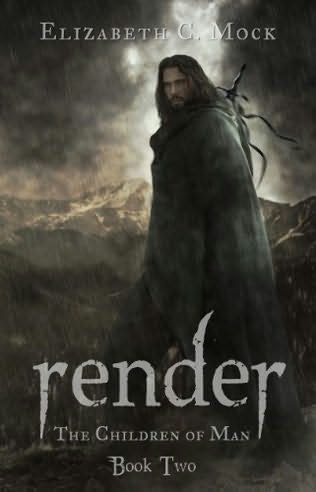 LB: Can you tell us how self-publishing has treated you so far? Your Book 1 has over 150 reviews on Amazon, so a lot of people have obviously checked it out!
LB: Can you tell us how self-publishing has treated you so far? Your Book 1 has over 150 reviews on Amazon, so a lot of people have obviously checked it out!
EM: Self-publishing has treated me quite well. In July 2010, I participated in smashwords’ semi-annual sale and offered Shatter for free. As a result, my sales saw a massive spike. Once the sale ended, I decided to try the loss-leader model (first taste is free!) and offered the book as free all the time. In October 2010, amazon price-matched the e-book as free. On amazon alone, I saw 25,000+ downloads that month.
At this point, Shatter, both print and digital, has been sold or downloaded over 230,000 times. In November 2011, I released the second book in the series, Render, and more than 7,000 copies have been sold.
I’ve had nothing but good experiences with self-publishing. My readers are vibrant and enthusiastic and gracious, and I adore them. My cover artist, Claudia McKinney, is spectacularly talented as well as a truly lovely person. One of my close friends, Anne Hromalik, designed my jaw-droppingly beautiful maps. (Shameless plug: If you need freelance artists, they’re both extremely professional and worth the money.) It’s been a lot of hard work and long hours, but I’ve enjoyed it.
LB: I understand you recently decided to take on an agent and hope to switch to traditional publishing. What made you decide to go that route?
EM: Last November, I was contacted regarding my books. I can’t really go into details, but it raised some questions about publishing that I was ill-equipped to handle. I immediately turned to another old-school WoW guildie for advice. (And people say playing MMO’s is a waste of time.) Outside of Azeroth, he’s Barry Goldblatt, rockstar YA & Children’s Lit agent of BG Literary (BGL).
What Barry and I discussed that day led to my decision to seek representation, and the first phone call I had with my agent Joe Monti led to the move into traditional publishing.
First: Why an agent?
- Navigating the business end of publishing. This is why I contacted Barry in the first place. I’m not savvy to all the ins and outs of the business end of publishing. (Though to be clear, the reason I contacted him turned out to be completely legit.) With an agent, I don’t have to worry about the business end of things, because Joe guides me through it.
- An agent protects you and your interests. Agents can protect you from predatory contracts or publishers. They know what a legit contract looks like, and they fight for their clients. Think James Frey’s shady contracts with I am Number Four.
- Selling rights. Even if I hadn’t decided to go traditional with the series, an agent can still sell foreign, movie, and audiobook rights for a self-published author.
- A professional partner that sharpens you. This was something important to me personally. Not all agents take an editorial role with their clients. BGL does, and I think it shows in their clients’ books. Joe gives sharp critiques that always push my writing further. I respect and appreciate that so much about him.
- Connections. This is a large part of an agent’s magic. They know people. Good agents have connections all over the publishing world. They have reputations, and editors trust their professional opinions enough to read your MS. This is why an agent is necessary for entering traditional publishing. I decided to sign with Joe and BGL because they have some pretty reputable credentials. (Info here: http://www.bgliterary.com/about/about-joe-monti/)
- A community. Again, this is not necessarily true of all literary agencies, but it factored into my personal decision. BGL is a community of authors. It’s a priority to Barry that the agency be a family, not just a business. Every year BGL hosts a writers’ retreat for the agency. Because artists in community create better art.
- Pie. That’s right. Pie. The first time I met Joe in person we went to a little pie shop in Brooklyn to discuss my books. My agent bought me pie. Apparently, the way to my heart and my writing is through my stomach.
Second: Why traditional publishing?
- Editors. Editors. Editors. I crave constructive criticism. That’s my primary motivation. I want an editor to eviscerate my MS, so we can burn away all the dross. I want copy editors to catch all my idiotic typos. (Seriously, a book free of any typos is a miraculous thing to behold.) I want to collaborate with a creative team to produce the best work I’m capable of producing, and I believe that traditional publishing can offer this.
- Other mediums. Traditional publishing can more easily lead to audiobooks, movie optioning, foreign publication, and graphic novel adaptations to name a few. Yes, these are all possible within self-publishing, however, you have to devote a lot more time and energy into making them happen, and I still have another full-time job as a teacher.
- Scope. What amazes me is that my books have achieved the reach they have through self-publishing without any advertising and just a bit of publicity through social networking sites (Facebook, Twitter, Goodreads, Shelfari). I’m excited to see what a real marketing and sales team behind me can accomplish.
- Fan girl. Full disclosure. This is the embarrassing reason. My name is Elizabeth, and I am a geeky fan girl–to my core. Because I’ve gone traditional, I’m getting to know some extraordinary authors whose work I’ve respected and adored for years. This makes me giddy. I’m a dork. I know.
LB: Do you think you’ve had enough success with your first two books that it’ll make finding a publisher easier than if you were simply plucked from some agent’s slush pile?
EM: Yes and no. My commercial success is definitely advantageous. I come with an established fan base, and publishers want to acquire books they know will sell. I also come with the baggage of being self-published, which is becoming less of a stigma with the continued success of self-published authors.
However, if an MS makes it through an agent’s slush pile, it’s going to be a solid story. I’ve watched an agent read through queries. It takes a lot to get an agent’s attention from the thousands of submissions–a lot. In the end, I think it’s a wash. I don’t think I’m any more likely to have a publisher buy my series than anyone else with a good agent.
LB: Do you have any tips for indie authors who might like to use self-publishing as a stepping stone to eventually get an agent and a traditional deal?
EM: When I did decide to release the e-book, I was primarily motivated by a thirst for feedback. I wanted to see how people–who didn’t know me from a raccoon bashing its paws against a keyboard–would react to my stories. This may seem like an masochistic decision, because the interwebs are merciless. Fortunately, people enjoyed my story.
But I won’t lie that squirreled away in my mind, I thought self-publishing could prove my writing’s commercial viability to an agent. That was more of an afterthought, however, rather than a driving force. I had no expectations that self-publishing would ever lead to representation. I also realized, after the fact, that if my books had wallowed in obscurity, I could have really damaged my career prospects.
I would not necessarily look to self-publishing as a route into traditional. There are a lot of stereotypes to overcome, and while some of the circumstances that led me to my agent were within my control, some weren’t.
Things in your control:
- Write a good story. Writing is a craft. Practice it. And go read Chuck Wendig over at terribleminds.com. Seriously. (Caveat: He’s more than a tad vulgar, but he’s so very right.)
- Hire an editor. At the very least, you need someone to copy edit for you. People also judge a book by its typos.
- Commission good cover art and design. EVERYONE judges a book by its cover. You’re trying to get the reader’s attention.
- Be professional. I really cannot stress this enough. The bottom line: Don’t engage bad reviews. Don’t be vitriolic about publishing or other authors. What you say matters. Be professional. Be gracious. Be classy. Think Wil Wheaton’s first rule of the internet. (Full disclosure: Joe stalked my blog and other online presences before deciding to offer representation. He wanted to see if we’d be a good fit working together.)
Things out of your control:
- Timing. I happened to self-publish around the same time as Amanda Hocking, so the field wasn’t quite as saturated. For a while, I was one of two free fantasy e-books available on kindle. My agent also had been actively seeking a female-driven ensemble epic fantasy series to represent, which is why Barry referred me to him. So many things were just good timing in my situation, which was completely uncontrollable.
- Trends. You can’t control what’s popular or what readers or agents or editors are seeking. All you can do is write the best story you can.
I know those are only two things, but they are major factors.
There are so many options available to storytellers today, and there is a lot to get excited about. You need to research and decide which options are the best for you. Take the opportunities that are out there and tell your stories. Just remember that self-publishing, like an entrepreneurial venture, is a big time investment. I wouldn’t necessarily say that my path is a formula to follow, because so much of it came down to uncontrollable timing.
I want to thank Lindsay for having me on her blog. I love her Emperor’s Edge series, and if you haven’t read them, you should. She’s a fantastic example of why self-publishing can be vibrant and viable. Seriously, read them. It has a laconic assassin, an OCD heroine, and many, many things going horribly right as they go horrifyingly wrong.
LB: Aw, thanks for the plug, Elizabeth! Good luck with the publisher hunt!
If you’d like to know more, check out Elizabeth’s blog or the website for her Children of Man series. Her first book is available at Amazon, Smashwords, and other stores.
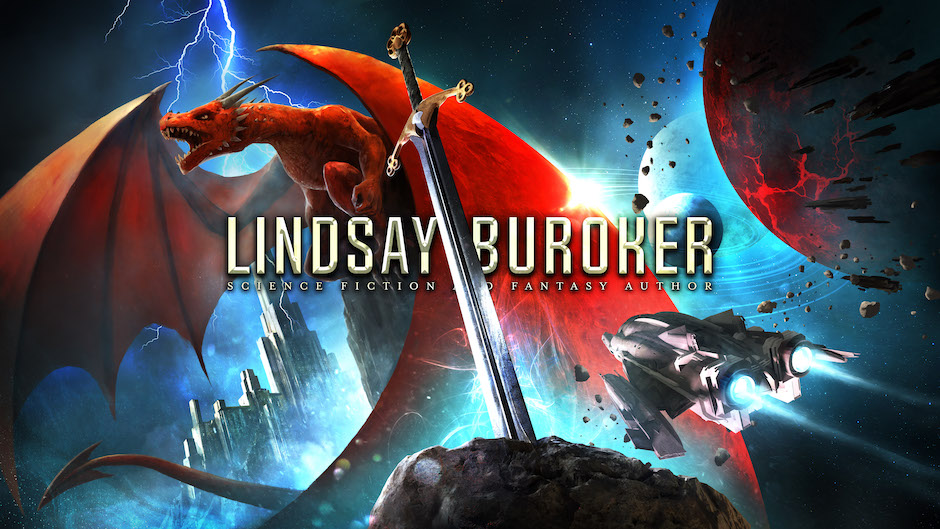




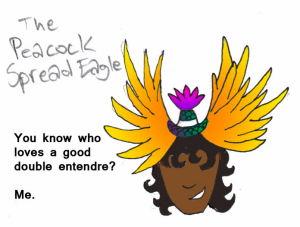
 I drew a couple of pictures of them. The color I’m not so sure about, but I’m sure These types of Maldynado-worthy hats come in all sorts of colors.
I drew a couple of pictures of them. The color I’m not so sure about, but I’m sure These types of Maldynado-worthy hats come in all sorts of colors. 